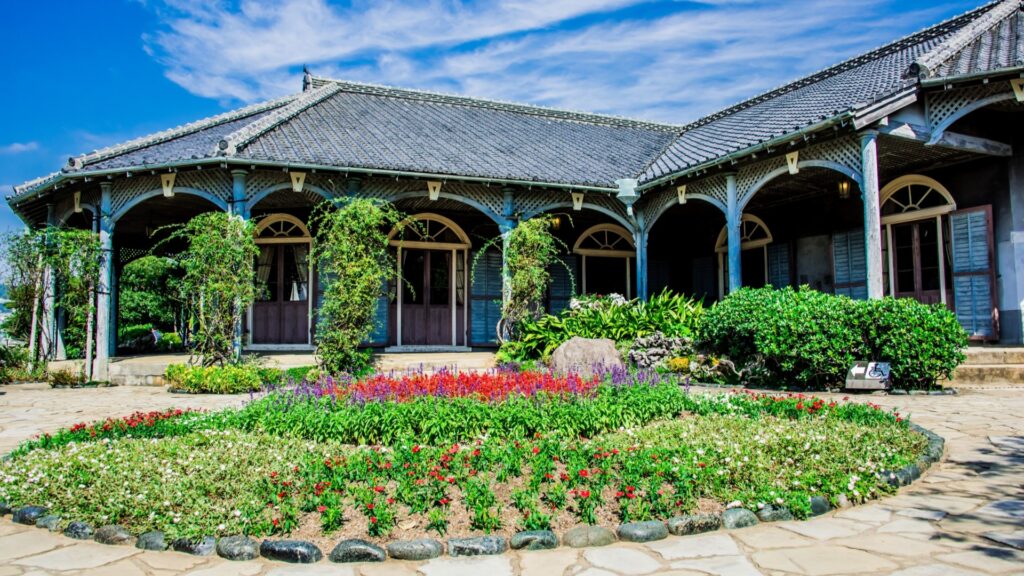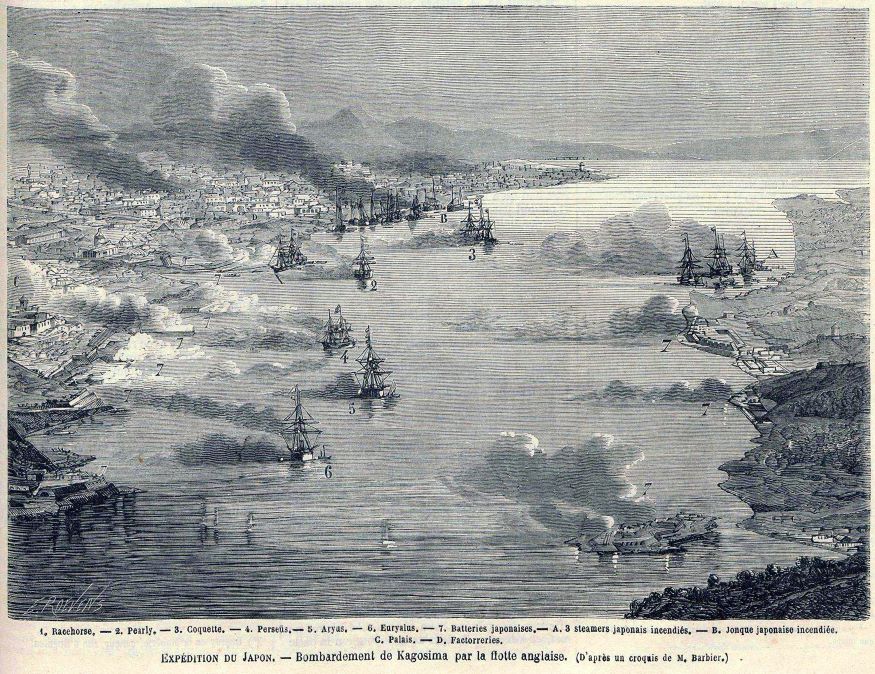Thomas Blake Glover, a brilliant turnaround from a weapons merchant to a contributor to Japan’s industrialization
Glover House stands as the most renowned Western residence constructed within a foreign settlement in Nagasaki. It holds the distinction of being one of Japan’s World Heritage sites: the Meiji Industrial Revolution; Iron, Steal, Shipbuilding, and Coal Mining. In 1859, Thomas Blake Glover embarked on a journey to Japan as an employee of the tea merchant Jardine Matheson & Co., arriving just a year after the Tokugawa Shogunate initiated steps to open the country to five nations, starting with Britain and the United States. This pivotal development came five years after Commodore Perry entered the port at Uraga or Yokosuka, seeking to establish trade with Japan. Glover established the Glover Trader Company in Nagasaki in 1861, focusing on trade involving weapons, raw silk, and other commodities. Following the demise of the Tokugawa Shogunate in 1868, he played a significant role in Japan’s industrialization by spearheading the development of the Hashima coal mine. Presently, Hashima, also known as Gunkanjima (naval ship island), stands as a historic ruin and gained fame as a filming location for the James Bond film “Skyfall”. Navigating through the tumultuous Meiji Revolution of the late 19th century, how successful was Glover in building his business ventures in Japan?

Namamugi incident between Satsuma domain and Britain triggered weapon business on Glover
On September 14, 1862, the Namamugi incident occurred in the village of Namamugi in Yokohama. During the incident, troops of Satsuma, one of the powerful domains, slashed and killed British individuals who had attempted to pass through the procession of Lord Shimazu Hisamitsu (1817-1887, 島津久光), younger brother of the previous lord Nariakira (1809-185, 島津斉彬). It was considered disrespectful to cross in front of a feudal lord's procession, and samurai were granted the privilege to immediately kill anyone who did so. This incident heightened the tension between Satsuma and Britain. Britain demanded compensation from both Satsuma and the Tokugawa shogunate. However, Satsuma rejected the demands and began making preparations to fight in the event of any future British attacks by developing Japan’s first torpedo and placing several orders for a lot of weapons with Glover.

On August 6, 1863, the British navy with a fleet of seven warships launched an invasion in Kinko Bay of Satsuma province, marking the beginning of the Anglo-Satsuma War. Amidst stormy weather, Satsuma warriors swiftly responded upon discovering that three Satsuma steamships had been seized and towed by British vessels. Satsuma initiated the conflict by opening fire, encouraging the British ships to retaliate. The exchange of fire resulted in artillery shells hitting the British flagship Euryalus, leading to the deaths of the captain and vice commander. In response, the British ships bombarded and inflicted significant damage upon the town of Satsuma.

The bombardment of the Western fleet passing through the Kanmon Straits expanded Glover's arms business
In 1863, another significant conflict occurred in Nagasaki involving the Choshu domain and four Western nations: the United Kingdom, the United States, the Netherlands, and France. The Choshu domain started cannon assault upon foreign ships passing through the Kanmon Strait in Shimonoseki, a key sea route. This act was carried out based on the shogunal order at the strong request of Joi by Emperor Komei to expel foreigners. During this time, Glover engaged in further business ventures, involving ships, weapons, and guns with several domains, including Satsuma, Choshu, and others, as well as with the Tokugawa Shogunate. Between 1864 and 1868, he sold a total of 24 warships and a multitude of weapons to interested buyers. He played a role in providing support through arms and naval resources to those who sought them during this period of upheaval in Japan.

Turmoil at the end of the Edo period
These incidents and wars led to chaotic political confusion in Japan, which subsequently led to numerous battles and assassinations between the anti-foreigner faction and those advocating for the opening of Japan to the West. The intensification of this confusion, combined with divergent opinions regarding the preservation of the Tokugawa shogunate or the restoration of political power to the imperial court, exacerbated the state of chaos even further.
Glover supported for Satsuma and Choshu domains toward opening to the world


Four months after the Anglo-Satsuma war, both parties held talks and agreed to a peace treaty. During talks, Britain valued Satsuma’s ability, while Satsuma recognized the excellence of the Western culture and military capability. Therefore, Satsuma was shifting from the anti-foreigner faction to the opening country wing. Glover started assisting Satsuma in smuggling nineteen young samurai to Britain to enable them to study Western culture and technologies, aiming to accelerate the opening of Japan to the outside world, despite the strict violation of the Tokugawa government’s ban on overseas travel. To achieve this, Glover’s house had a secret compartment to prepare things. Glover also supported the smuggling of five Choshu young people similarly, including Ito Hirobumi, who became the first prime minister of the Meiji Government.
Glover transformed into a businessman in reproduction and development
In 1868, the Tokugawa shogunate ended and the new Meiji period (1868-1912) started with its first Emperor Meiji (1852-1912, 明治天皇). Glover changed his business from trading weapons to the Takashima coal mine while paying attention to the demands of steamships and steam locomotives. When its ownership was transferred to Mitsubishi, he became an executive and succeeded at the Takashima coal business, focusing on trade overseas. Mitsubishi explored the Hashima coal mine several kilometers east of Takashima coal as Japan’s first undersea coal mine. After that, he became an executive advisor of the Mitsubishi group. He also rebuilt a brewery company in 1884 to expand its business, thus establishing the new Kirin Brewery Company. In recognition of his significant role in Japan’s industrialization, the Meiji government awarded him the “Oder of the Rising Sun” medal in 1908. Glover married a Japanese woman named Tsuru, and they resisted their final resting place in Nagasaki.

Glober Timeline
| 1838 | Glover was born | Age =1 | Edo period |
| 1854/3 | The Treaty of Peace and Amity between the US and Japan was concluded | 17 | |
| 1854/8 | The Treaty of Peace and Amity between the UK and Japan was concluded | 17 | |
| 1859 | Glover embarked on a journey to Japan | 22 | |
| 1861 | Glover established Glover Trader Company in Nagasaki | 24 | |
| 1862/9 | Namamugi Incident | 25 | |
| /8 | Anglo-Satsuma War | 26 | |
| 1863-64 | The Shimonoseki campaign | 26 | |
| 1867/11/10 | Taisei Hokan, Tokugawa's political power was officially returned to Emperor Meiji | 30 | |
| 1867/12/5 | The Decree for the Restoration of Imperial Rule | 30 | |
| 1868/1/3 | The Boshin War started at Toba-Fushimi | 31 | |
| 1868/4/11 | Edo castle surrendered without bloodshed to Imperial Army | 31 | |
| 1868 | Glover managed Takashima Coal | 31 | |
| 1868/10/23 | The Meiji Restoration | 31 | Meiji Era |
| 1891 | Glover became CEO of Kirin Brewery Company | 48 | |
| 1908 | Glover was awarded the “Oder of the Rising Sun” medal | 71 | |
| 1911 | Glover passed away | 74 |
Recommendations to visit
Glover House
- Access: 1 hour from Nagasaki Station. Take Nagasaki Electric Tram #1 bound for "Sufukuji (崇福寺)”, then transfer Tram #5 at Shinchichukagai (新地中華街) boud for Ishibashi (石橋). Get off at "Ouratenshudo (大浦天主堂)" tram station, then a 10-minute walk.
Hashima (Gunkanjima island)
- Access: 1 hour from Nagasaki Station. Take Nagasaki Electric Tram #1 bound for "Sufukuji (崇福寺)”, then transfer Tram #5 at Shinchichukagai (新地中華街) boud for Ishibashi (石橋). Get off at "Ouratenshudo (大浦天主堂)" tram station, then a one-minute walk to the Embarkation Check-in Location at Gunkanjima Digital Museum.


